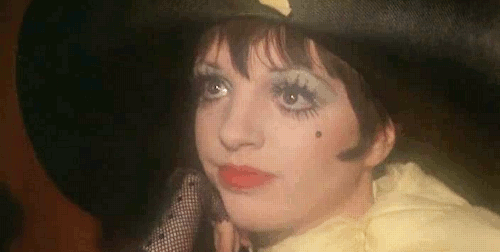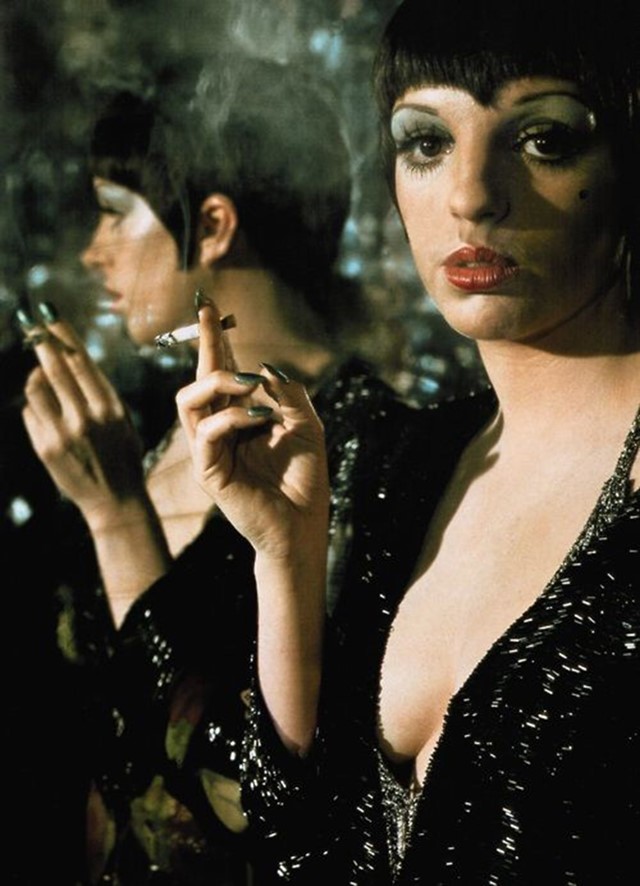From an emerald green manicure to her signature ‘bubikopf’, we dissect the panache of Liza Minnelli’s most infamous characterisation
“You’re about as fatale as an after-dinner mint!” shrieks writer Brian Roberts at his girlfriend Sally Bowles during an argument over their shared love interest and intertwinement in a ménage à trois. The year is 1931 and the rise of National Socialism looms ominously against a backdrop of the Weimar Republic Cabarets; the embodiment of which takes the form of Miss Bowles herself. The 1972 film adaptation of Cabaret, directed by Bob Fosse, is a semi-autobiographical account of novelist Christopher Isherwood’s time in pre-war Germany, originating as a hit Broadway musical: cue visions of fishnet-clad dancers suggestively cavorting about on stage with chairs. Liza Minnelli’s notorious characterisation of Sally is a full representation of the ‘Weimar Girl’; she sold herself on appearance, offering up sufficient fuel for the ’male gaze’.
Based on Jean Ross, a woman Isherwood became acquainted with through the cultural renaissance taking place in the city of Berlin during his visit, he describes the character of Sally thus: “I noticed that her fingernails were painted emerald green, a colour unfortunately chosen, for it called attention to her hands, which were much stained by cigarette smoking and as dirty as a little girl’s. Her face was long and thin, powdered dead white. She had very large brown eyes which should have been darker, to match her hair and the pencil she used for her eyebrows.” Bowles is self-professed to be ‘divinely decadent’, yet, as her lover Brian astutely points out – and Isherwood’s description would attest to – she is more faux fatale than femme fatale, with her outward flamboyance concealing deep-seated psychological pain and a childlike vulnerability. How very relatable.

The Signature Style
The most contested and celebrated symbol of the nation’s social revolution was the Neue Frau, or ‘New Woman’, with her short skirt, bubikopf (bobbed hair) and strümpfe (stockings). These sartorial codes were all employed by Fräulein Sally Bowles to ensure she was fully abreast of the latest Weimar trends. The costumes for the film were designed by Charlotte Flemming, who added a distinctly 1970s twist of eccentricity into the garments draped over Liza Minnelli. A particularly notable outfit is the black and yellow ensemble she sports during a language lesson between Brian and his German student, declaring: “I spent the entire afternoon bumsening like mad!” (For those unfamiliar with the meaning of the word, we’ll leave it up to your imagination – or Google translate – to figure it out.)
A clear advocate for underwear as outerwear, Sally whiles away her day in chemises, negligees and kimonos, supping on her hangover cure of choice – a prairie oyster cocktail – concocted from a raw egg, Worcestershire sauce, tomato juice and vinegar. When she nocturnally takes to the stage, Bowles is evidently a huge fan of masculine bowler hats combined with backless playsuits or dresses, emphasising collarbones and shoulder blades. A constant in Sally’s appearance is her strong beauty look, which remains an alluring compilation of thin penciled-on eyebrows, opaque blocks of coloured eyeshadow framed by spidery lashes and aforementioned emerald green talons. During an interview in 2012, the great Liza noted that she applied all the makeup herself when preparing for the role of Sally, proclaiming: “The night before we started shooting, I put on all the lashes and dyed my hair black and cut it into a point and everything!”

The Modern Manifestation
Sally Bowles’ influence can be seen in contemporary fashion and culture: from the collaborations of John Galliano and Pat McGrath at Dior and Maison Margiela, to Jean Paul Gaultier’s costume design, her panache continues to galvanise the industry. Minnelli’s characterisation, in particular, has greatly impacted queer culture, with her style embodying the genderfuckery pioneered by a plethora of singers and actors during the 1920s and 1930s. The personality of Sally Bowles is colourful, addictive and also a little toxic; but through her Oscar-winning performance, Minnelli managed to champion a woman who acknowledges her flaws, yet pours herself a drink, puts on some lipstick and pulls herself together.
